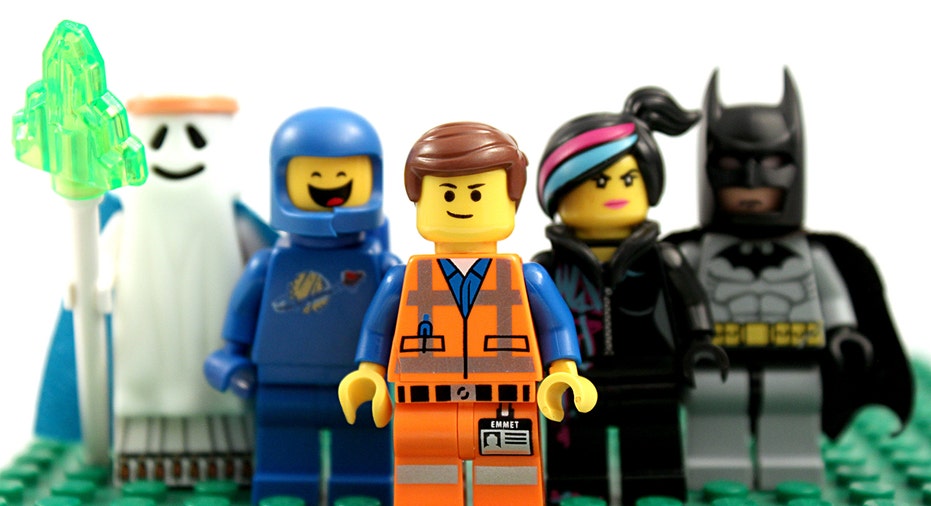How a Movie Propelled Lego Back to the World's Most Powerful Brand

Lego recently took back its crown from Google as the world’s “most powerful brand,” according to Brand Finance’s 2017 yearly Global 500 rankings report. And film experts say it had a little help from a movie character named Emmet.
Following the release of The Lego Movie in February of 2014, the little plastic blocks that have inspired imaginations for generations saw a record $4.4 billion in sales, which helped the already iconic brand regain its status as the most powerful.
“It’s amazing now how much a movie can impact a brand,” said Dan Lin, producer of The Lego Movie and The Lego Batman Movie. “That’s something we’re paying a lot of attention to and that hopefully these movies do help to tell the brand’s story.”
The Lego movie told the story of Emmet, voiced by Chris Pratt, who was tasked with saving the world from an evil villain, voiced by Will Ferrell. The movie, which had a budget of $60 million dollars, brought in nearly $470 million worldwide, according to Box-office Mojo, and was labeled “certified fresh” by Rotten Tomatoes. The Danish toymaker capitalized on the popularity of the film through licensing and themed toys – reporting double-digit growth in countries overseas the same year as the film’s release.
Although The Lego Group CEO, Jørgen Vig Knudstorp, didn’t attribute the company’s recent success entirely to the movie, he recognized the major contribution the film made to company’s bottom line.
"They didn't get permission to screen it [in China] and the Chinese market is now a huge cinema 3-D screen market. And the fact that it didn't play there means that our more than 50% growth rate in China was helped by the general strength of our marketing and assortment," Mr. Knudstorp said, as reported by The Wall Street Journal. "The movie is an important event but it's far from the only explanation."
The film industry, which has stagnated in recent years, has become more reliant on physical goods to compensate for sluggishness at the box office, said Brett Danaher, Chapman University assistant professor of economics and management science.
“So, without a doubt, having a franchise out there that allows you to sell stuff that can’t be pirated, that can’t be streamed, is definitely more of an edge than it would have once have been,” said Danaher.
However, when the original Lego movie was first announced, the response was far from positive.
“People thought we were making a craft commercial for a toy, which we were certainly never intending to do,” said Lin. “So we went in stealth mode, and then surprised the audience stealthily, and became a cultural phenomenon.”
Now Lin is at it again, and hopes to capitalize on their upcoming spinoff, The Lego Batman Movie, which hits theaters February 10.
“It plays to all audiences. It plays to certainly kids and their families, but certainly evening shows will be full because adults will want to see the movie. Guys and girls want to see this movie,” said Lin.
Lin said the spinoff tackles the superhero/action genre and was produced on an $80 million budget. Unlike the Lego Movie, which used 5% real Lego blocks, the Lego Batman’s level of complexity required the film to use computer-generated imagery (CGI).
The plotline driving the Lego movie franchise came from from Lin's own imagination, which was sparked in 2008 when he saw his then five-year-old son playing the iconic toys.
“I realized as he was playing with LEGO he would talk through an adventure in his mind, and tell himself this story, this grand adventure that he had. And I thought to myself – I love playing with Lego, I love playing with him, but I thought if I could capture that play experience in a movie that would be a really special movie. That it’s really about creating a movie that kind of celebrates imagination and creativity,” Lin said.



















